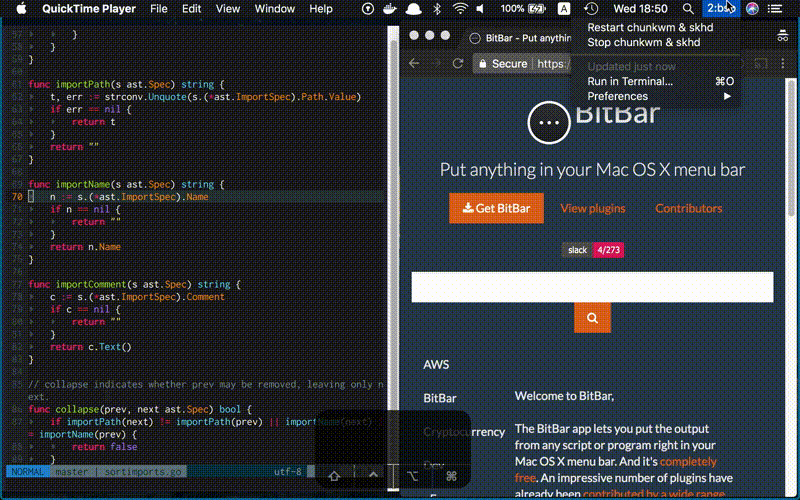Hi, I'm Richie Ogura, or 小椋一宏(Ogura Kazuhiro), the CEO of HDE, Inc. As the final post of this advent calendar, let me show my love towards diversity.
Accepting differences encourage both learning and challenge
In my opinion, making organizational culture to be more accepting of our differences, encourages us to take on more challenges.
Didn't get it? Let me explain.
Imagine that there were 49 people wearing a black suit and only one was wearing a red suit. What would the 49 people think? They will think, "Why he is wearing a red suit?". Moreover, they might think, "He should wear a black suit!". That is what often happens in a monotonous organization.

In a monotonous organization, we are mostly the same so we think that being the same is natural. In that kind of environment, nobody wants to do something different from others unless the person is really entrepreneur-ish. You follow how others would do things, even when you know that it's an inefficient way of achieving the goal.
Now imagine a diverse organization where all 50 people were all wearing different clothes in various colors. Everyone is different; The difference is in their nature. In such an environment, you would feel delighted when you find something in common with the group because that is something precious. If you can share the same company vision or an objective with others, that's something you would want to keep. This type of feeling bonds people and brings solidarity to teams.

In a diverse organization, doing something different from others is not a big problem since everyone is different from the beginning. You may not want to betray the company vision, which is something precious you share in common. However, since differences and challenges are not a big issue, you have an idea of which might work so you could just try it even if that idea sounds out of the norm in that organization.
This means that in a diverse organization, obstacles you need to overcome to create new challenges is far fewer than in a monotonous organization. When challenges are encouraged, that is usually a positive thing for most organizations.
This is because diversity not only encourage the spirit of challenge, but also learning. Since everyone is different, there are many things you can learn from the person next to you. And because everyone is different, you won’t feel ashamed to ask questions. This creates an environment where people willingly teach one another and ask questions, which in turn encourages knowledge sharing and nurturing of a great learning culture.
What happened in our company
Our company HDE, used to be a monotonous company comprised of Japanese speaking, Japanese employees only. For 17 years, we were a totally domestic Japanese company run by Japanese people, developing services in Japanese and selling exclusively to Japanese customers.
However, in four years, we found ourselves to have turned into a diverse company as a result of starting hiring non-Japanese speakers from outside Japan in 2013.
Now we are a (broken) English speaking company with 15% of our employees being non-Japanese, from over 10 different countries. While most of our revenue still comes from Japan, our service supports English, Chinese and partially in Thai for our international customers.
Meanwhile, our annual sales volume grew 2.5 times in four years. We opened our first global branch in Taiwan. Even though we were not particularly focusing on hiring women, we were nominated for "JAPAN WOMAN AWARD 2016" and ranked 10th out of 1000 companies. Although there is still a long, long way to go, we are happy and proud of the result that we have achieved so far.

I believe we were able to achieve these things because we have a great learning culture where we continue to challenge new things everyday. If our challenges fail, we learn from it and try something new. By continuing to do this, I believe that we will eventually succeed.
This advent calendar blog is also one of the challenges that we have created, and I am happy with the result.
Japanese companies should become more diverse
I am strongly in favor of strengthening the diversification of our company. Since I am really into this idea, I even believe that if every Japanese company would diversify, we can make Japan a more vibrant and lively country.
Japanese society is known to "Nail down a nail that sticks out (出る杭は打たれる deru kui wa utareru)". Some would say that this is because we are an island nation that historically did not have very many ethnic groups.
If this is truly the case, it's something that is inherent and may be difficult to change. But I would argue that the real reason has something to do with Japan’s militarism during World War II, which fostered the peer pressure culture. The remnants of this can been seen in today’s school educational system. One example is the recent "Dye Her Natural Hair Black or Drop Out" news:
Peer pressure culture cannot be something that has been woven into our DNA since it has only been around for the past 70 to 100 years. We can change this, and we should.
I would like to pursue the challenge of diversifying our company so that we can be a good example to the Japanese society, whether we succeed or fail.











